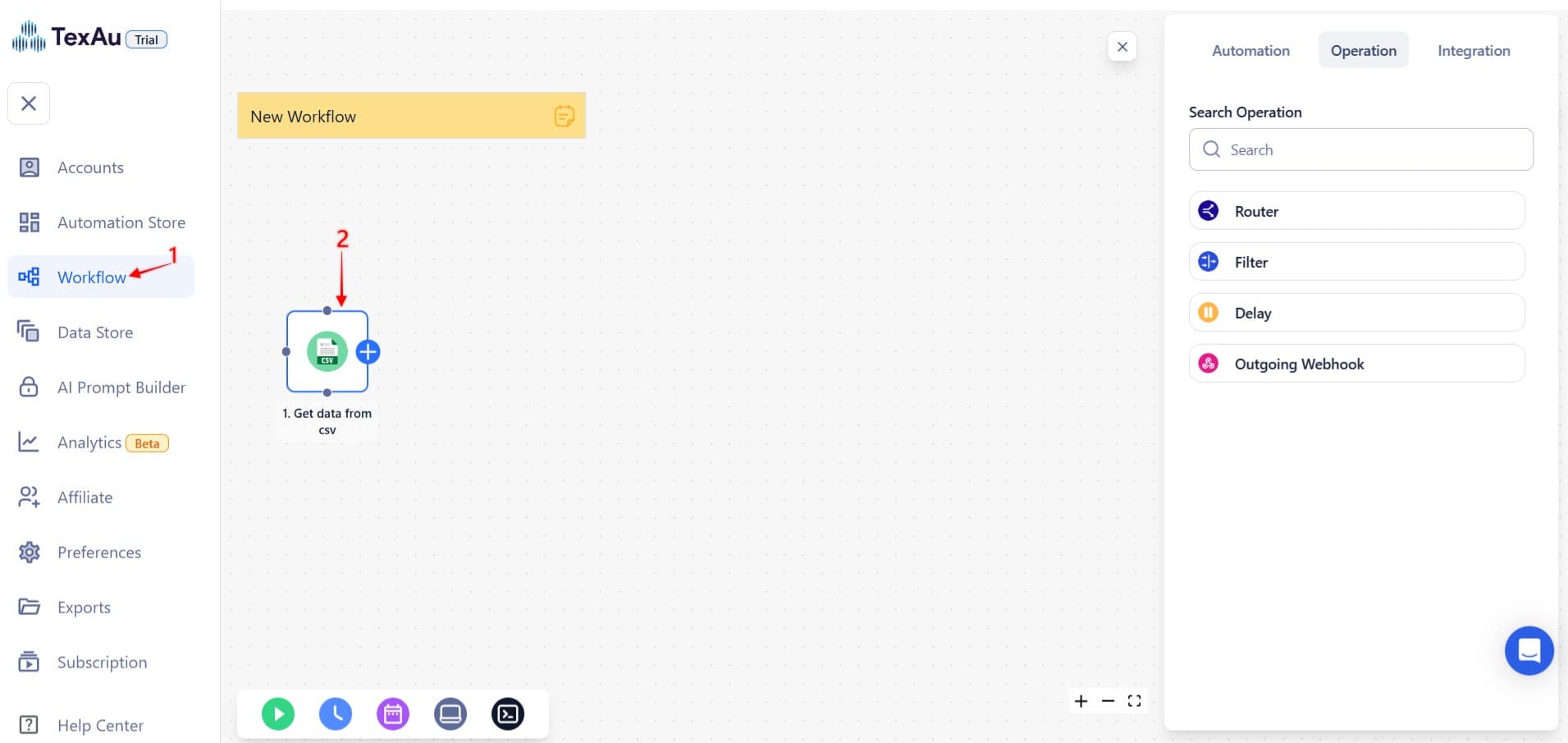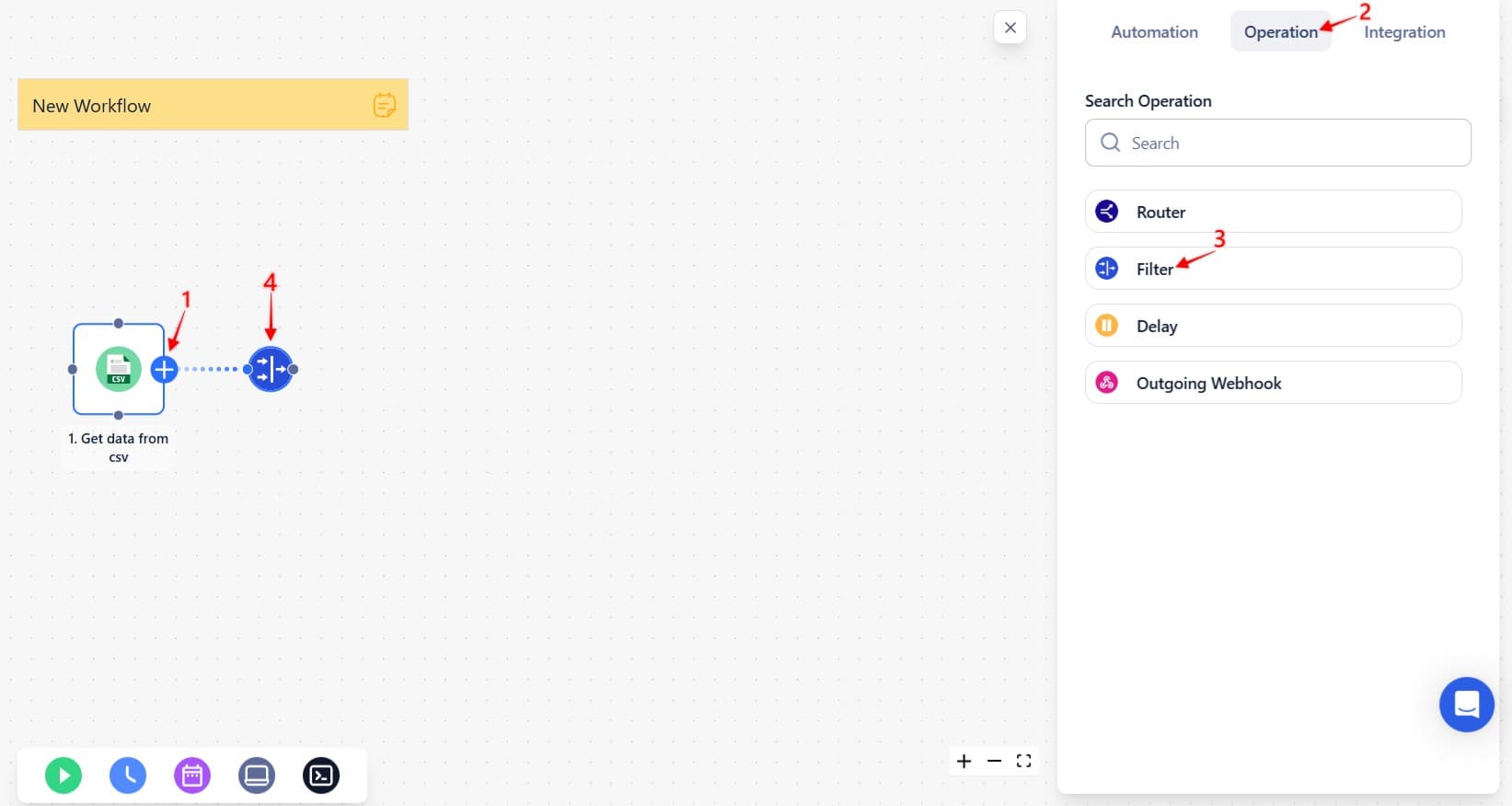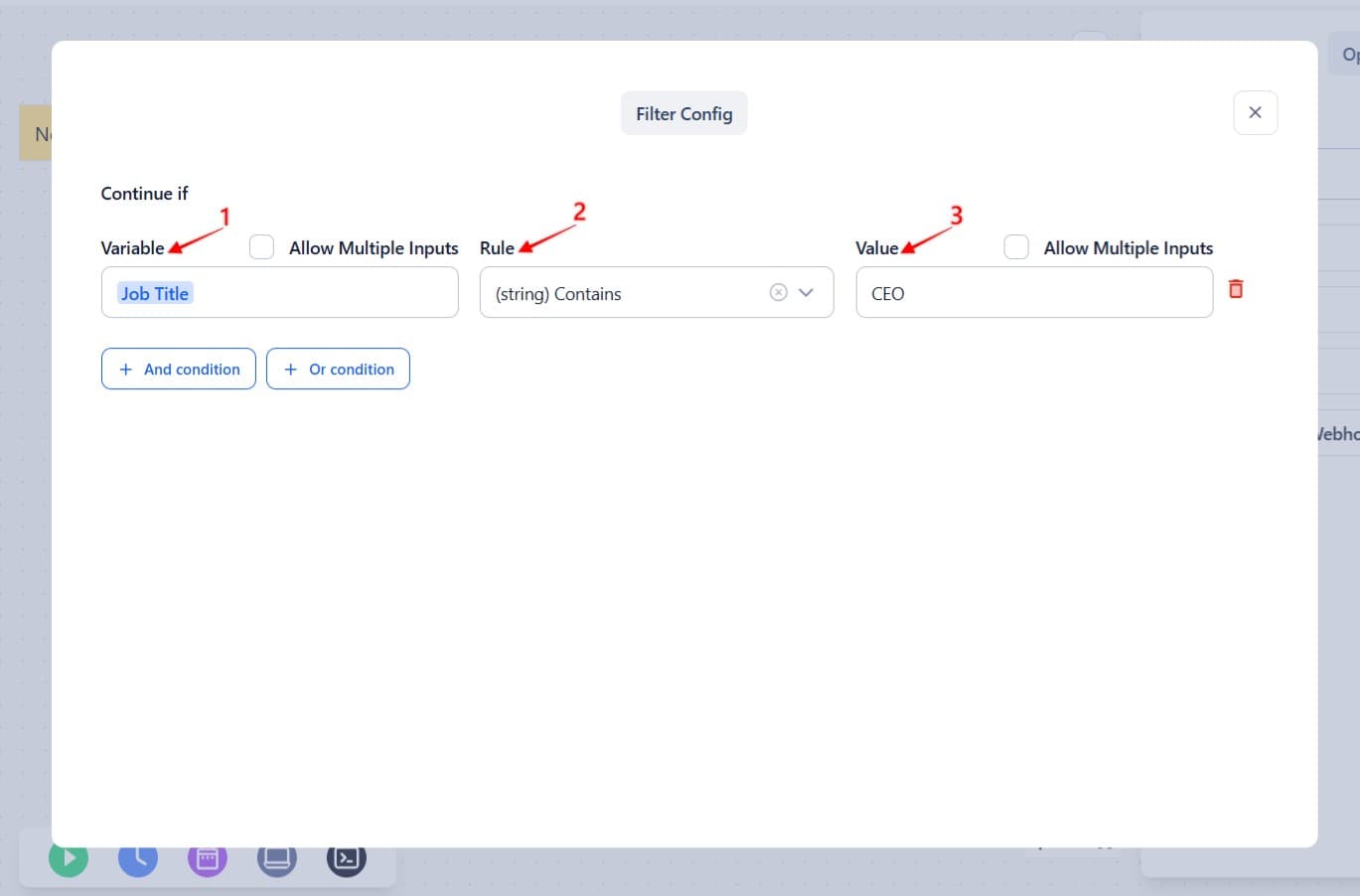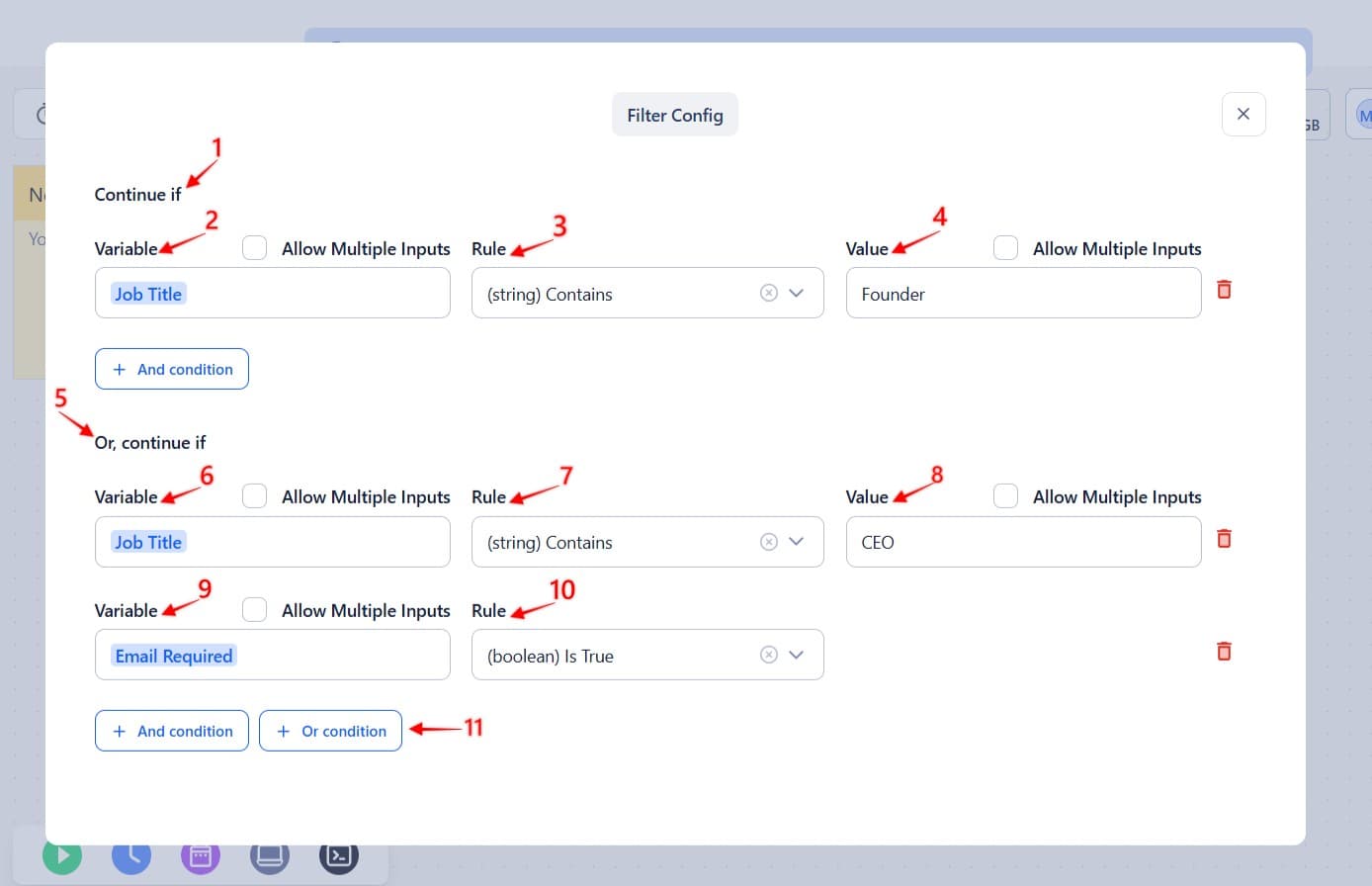How to Use Filters to Control Your Workflow Logic
Filters in TexAu let you apply rules to the data passing through your workflow. They are useful when you want certain steps to run only for data that meets specific criteria, like targeting leads with a particular job title or skipping rows that already exist in your CRM.
What Filters Do
A Filter acts as a checkpoint that evaluates whether the incoming data matches the condition(s) you've set. If it does, the data moves forward in the workflow. If not, that row is skipped, and the workflow continues unaffected for other rows.
For example, you can use a filter to:
- Allow only Social media profiles with a job title containing 'Manager'
- Exclude rows where the email already exists in your CRM
- Filter leads based on location, company size, or any variable available from a previous step
How to Add a Filter in TexAu
Open your workflow
- Go to the Workflow Builder and create or open an existing workflow.

Add a Filter
- Click the plus (+) icon where you want to insert a condition.
- Select Filter from the list of operations.

Configure the Filter
- Double-click the Filter node to open the settings.
- Choose a data variable from a previous step (e.g., Job Title, Message ID, Connection Status).
- Select a condition (e.g., contains, equals, is empty, greater than).
- Enter the value to compare against (e.g., CEO, 123).

Set up multiple conditions (optional)
- Combine conditions using AND (all must match) or OR (any can match).
- This lets you filter data more precisely.

Connect it to the next steps
Once the conditions are set, the filter automatically passes valid rows forward to the next step.
Best Practices for Using Filters
- Use precise criteria to avoid letting irrelevant data through.
- Combine multiple filters for more advanced logic.
- Use AND / OR logic to tailor how conditions are evaluated.
- For best results, try using smaller batches of data when fine-tuning complex filters.
Filters help you keep your workflows efficient by processing only the rows that matter, improving accuracy, speed, and relevance in your automation.


